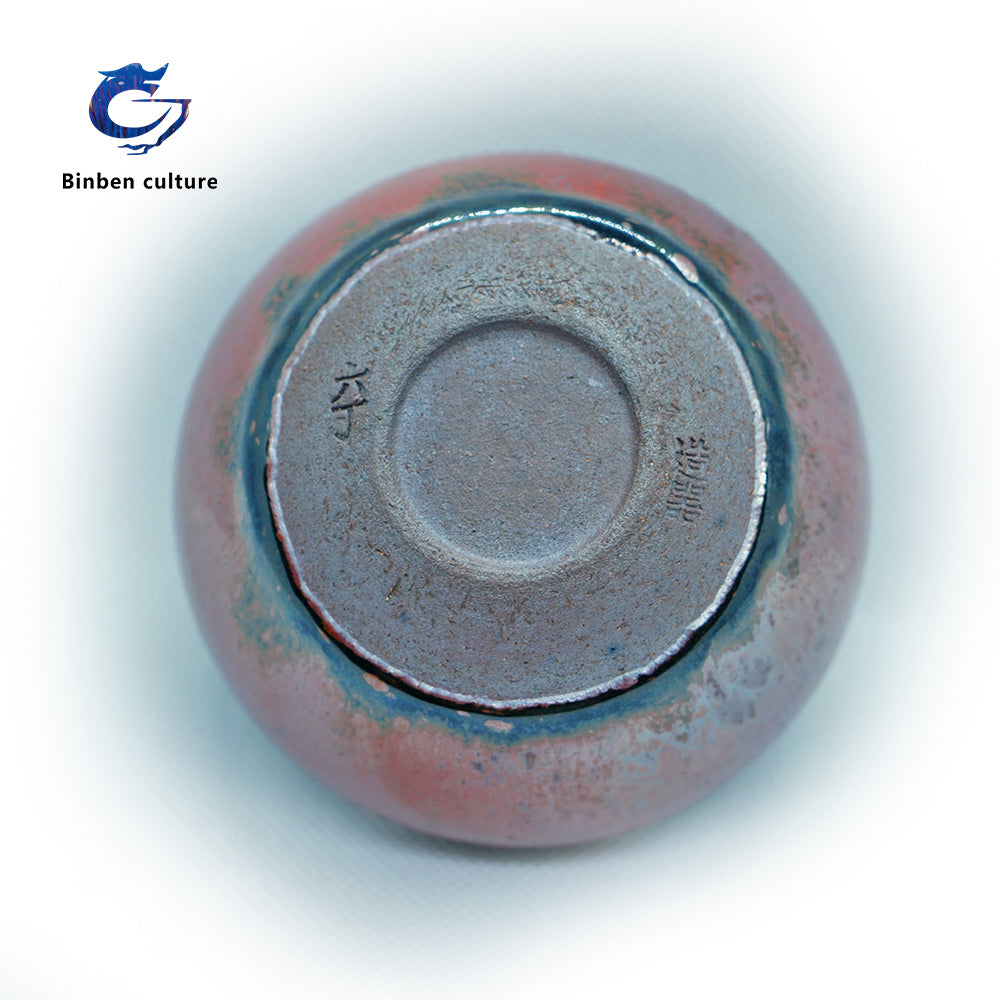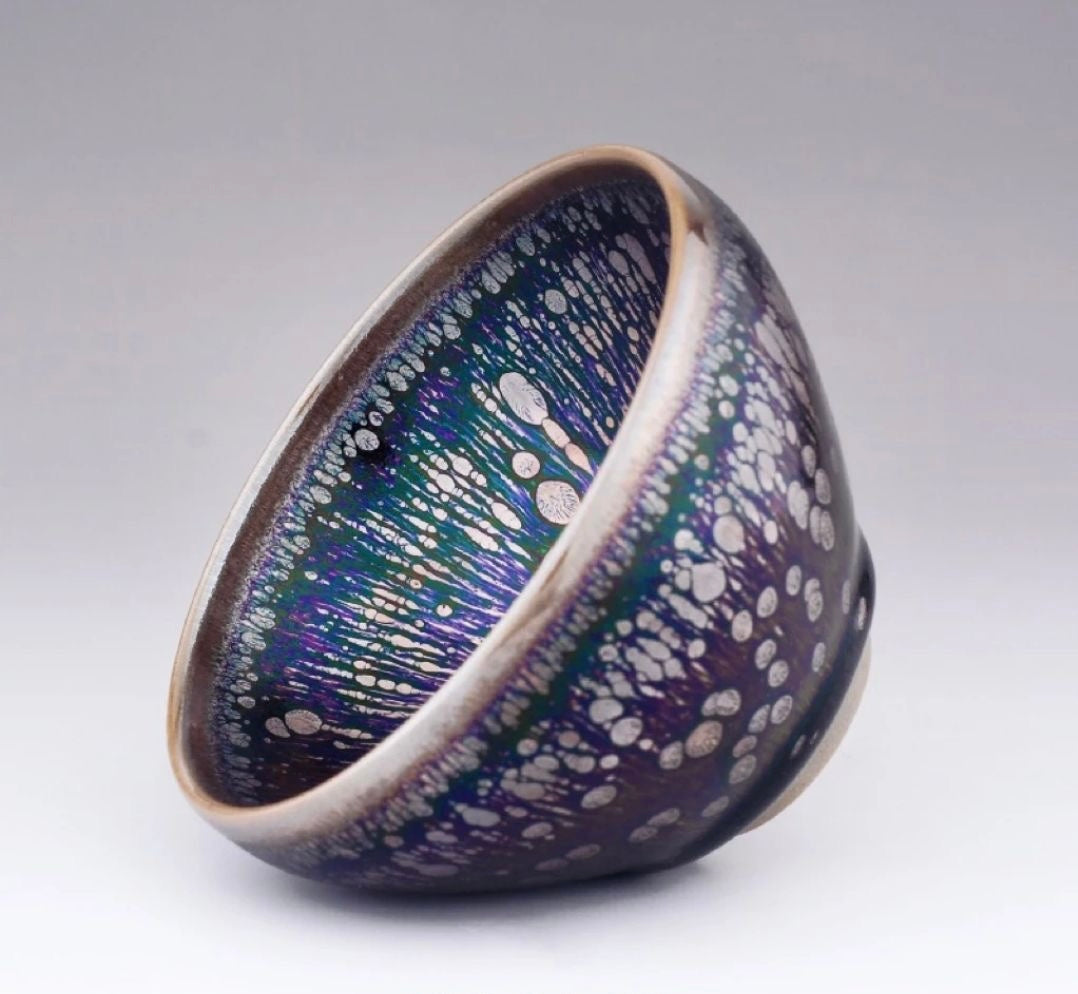Xia Xing six Ding firewood burning bowl type rabbit glazed building lamp
Xia Xing six Ding firewood burning bowl type rabbit glazed building lamp
Impossibile caricare la disponibilità di ritiro

- This Xia Xing Liuding Jianzhan is shaped into a bowl, and its shape is unique and elegant. The characteristics of the bowl-shaped building lamp are that the mouth edge is wide, the height is relatively low, the mouth edge is slightly introverted, and the whole is thin at the top and thick at the bottom, and there is no bottom foot.
- The glazed fine lines are even more stunning. The lines are slender and long, like hair, evenly distributed on the surface of the bowl, presenting a natural and smooth aesthetic. The color of the milliline is silver blue, golden yellow, color, etc., under the reflection of the light, the milliline flashes with a charming luster, such as the stars, and like the silk intertwined, giving people endless reverie.
- In terms of glaze, the background color of Jianzhan is deep and rich, like the sky in the middle of the night, deep and mysterious. On top of such a base color, the fine lines become more and more clear and prominent.
- From a technical point of view, such a fine glaze is naturally formed during the high-temperature firing process, which requires the precise control of various factors such as temperature and atmosphere in the kiln, as well as the rich experience and exquisite skills of the craftsmen to achieve such a beautiful artistic effect.
Notice: Due to the transmutation in kiln, the pattern on each teaware will be slightly different. Therefore, every Jian zhan Tenmoku is unique and special, but it will be remained generally the same.
Visualizza dettagli completi



1. Clay selection. Jian Zhan's glaze and clay need to have a high iron content. Other kilns in the Song Dynasty tried to imitate Jian Zhan. Still, they usually could not succeed for the minerals in their geographic location could hardly meet the standards of making a Jian Zhan.
2. Crushing. Place the prepared clay and glaze in a machine for pulverization
3. Washing and sieve. The thickness of the clay or glaze should be moderate. After sieving, the clay needs to be put into the slurry tank, while the glaze needs to be placed in the glaze pool.
4. Chen Fu, which is a ceramic terminology, refers to placing the clay in a room away from sunlight and air, keeping a certain temperature and humidity, and storing it for a while.
5. Knead the clay. This process is aimed to further remove the air and impurities in the clay, make the mud dense, uniform humidity, and facilitate forming, meanwhile, it also prevents the clay from drying and cracking during post-production.
6. Shaping, is usually divided into hand shaping and machine shaping.
7. Modification. The traditional shape of Jian Zhan is mainly a shallow circle foot, and the base part and the “inner ring ” of the foot need to be modified by a knife.
8. Kiln the unglazed Jian Zhan. This process can increase the mechanical strength of the clay, and also remove a part of the cracked and fragile Jian Zhan in advance.
9. Blend glaze. The glaze formula of the ancient method is to use natural iron ore glaze and plant ash. These two simple substances can compose a beautiful glaze, which looks incredible, but the craft of making Jian Zhan is to use the simplest materials to create the most mysterious crystals.
10. Glazed. One of the big features of Jian Zhan's crafting is the half-glazed. Ancient people would specially design a glaze line to facilitate the control of the glaze range. Glazing also needs very skillful technique, ensure the glaze is moderate. If thin, the room for the growth of the crystal is too small to produce delicate works; if too thick, the glaze may easily stick to the bottom.
11. Put into the kiln. There is usually a need to place a layer of alumina powder on the bottom to avoid sticking.
12. Kiln and fire the Jian Zhan. The kiln is the most important process of making Jian Zhan. If the time, degree, and frequency of reduction are not well mastered, the desired glaze color will not be successfully created. After being put into the kiln, the master must concentrate on controlling the degree of reduction and not leave it for a long time.
13. Finishing kiln. After the kiln, due to various restrictions on the making process, each kiln will inevitably produce defective products, which must be disposed of on-site. Products that pass the quality inspection can be sold.
About BinBen Culture
At Binben Culture, we preserve the centuries-old legacy of Chinese ceramic mastery, blending time-honored techniques with modern design to create exquisite porcelain that elevates everyday life with artistry, quality, and cultural essence.
Featured collection
-
Xu Guozhu Dragon Kiln Wood-fired Jianzhan Master Cup Tea Cup Tea House Tianmu Cup Pure Handmade Tea Cup
Prezzo di listino $499.00 USDPrezzo di listino -
Fujian Jianyang Jianzhan tea cup partridge spot original ore owner
Prezzo di listino $469.00 USDPrezzo di listino -
Dangerous wood-fired Jianzhan pure handmade tea cup gold thread large tea cup host cup high-end collection single cup
Prezzo di listino $1,900.00 USDPrezzo di listino -
Jianzhan fine tea set Li Ximei pearl spot oil drop host cup Jianyang Jianzhan host cup
Prezzo di listino $999.00 USDPrezzo di listino
BinBen Culture
Seven Jian Zhan 07 31
Share









